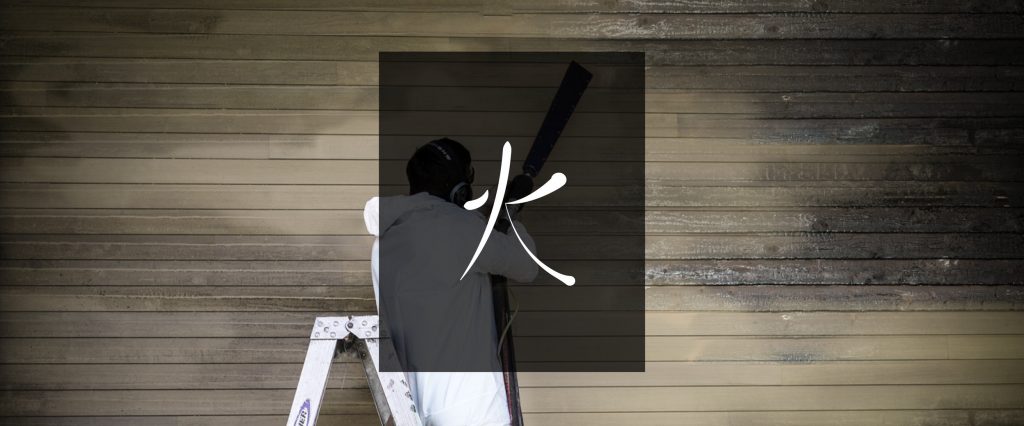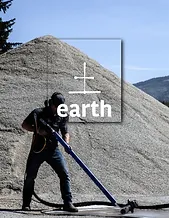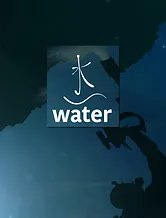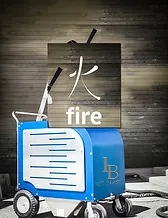Choose from the five elements:
METAL

METAL APPLICATIONS
- Deburring
- Surface Preparation
- Cleaning Paint
- Tire Molds
- Foam Molds
- Injection Molds
There are several different reasons why you might blast a metal surface. Surface preparation or paint removal, deburring, or maybe you need to clean off residue that’s built up on a metal mold.
Ice Blasting is a faster and cheaper method of removing rubber residue from tire molds. Ice is gentle enough that it won’t wear away the mold but aggressive enough to clean the rubber residue off it. Compared to competing technologies, ice can be made practically free using any standard ice cube maker. Ice blasting is an excellent way of removing burrs during the manufacturing process. Ice will deform on impact and squeeze through small holes, tight slots, and channels, knocking off burrs as it goes. As a result, it can be used to clean off tiny burs from small or complex parts. Ice blasting will not damage the parent metal. Other deburring processes usually round off corners and edges. This can be a problem when a high tolerance is needed on parts. Ice blasting just removes burrs without rounding the edge. At the same time, ice blasting removes greases and cutting fluids left over from machining processes, performing two operations at once.
Because of its dust suppression qualities and minimal residual moisture, ice blasting makes containment easy. It is an ideal technology for removing hazardous substances like lead paint. The spray of water captures blasted-off particulates and drags them downwards, resulting in lower levels of airborne contaminants. If a tarp is placed beneath the blast area, the lead paint will collect on top of it in a neat slushy pile. Containment and disposal are as easy as folding up the tarp after blasting. For this reason, ice blasting is used to clean lead paint off large bridges.
In these and other Metal applications, Ice Blasting by A&M Environmental is Redefining Clean.
EARTH

EARTH APPLICATIONS
- Oil & Gas
- Tar
- Bitumen
- Adhesives
- Concrete
- Food Processing
- Nuclear
- Asphalt
- Grease
The applications that fall under the earth element are some of the biggest industries in the world. Often dealing with expensive and highly sensitive contaminants, it’s imperative to have an effective, safe, and environmentally friendly cleaning method.
Ice Blasting is ideal for cleaning tars and greases. It uses 1/10th of the water of a pressure washer, making it a much better option for areas where water is scarce. Ice Blasting is also great at cleaning off harder substances. It can be used to clean asphalt and concrete off trucks. The impact force of the ice particles breaks the concrete or asphalt off in chunks.
Ice blasting is much more gentle than sandblasting. Because of this, it can be used to clean usually sensitive areas, like wires, pneumatic control lines, fittings, and glass, without damaging them.
WATER

WATER APPLICATIONS
- Marine
- Underwater Intakes
- In-Water Hull Cleaning
- Hull Cleaning
- Paint Removal
- Barnacles
- Docks & Sea Walls
- Storage Tanks
- Pools
Ice Blasting makes quick work of barnacles, muscles, seaweed, and other types of marine growth. If left to their own devices, these uninvited travelers significantly increase drag and fuel costs, as well as covering sensors and blocking pipes.
Underwater cleaning is typically done by divers equipped with scrapers. This is slow and labor-intensive, and the scrapers are only effective on smooth, flat surfaces. Trying to clean out small nooks or pipes is next to impossible, even though these are among the first and most important areas to become overgrown.
With different lengths of nozzles, it’s easy to reach into tight areas and blast off marine growth that has sprouted there. Best of all, since ice is just a different form of water, the media has no adverse effects on the environment.
Ice blasting can also be used to remove marine growth or antifouling paint when the vessel is taken onto land. Ice is gentle enough to remove the paint or growth without damaging the fiberglass or aluminum hull.
WOOD

WOOD APPLICATIONS
- Remediation
- Fire
- Paint Removal
- Stain Removal
- Pulp & Paper
- Surface Preparation
Ice Blasting is great at removing glues and hard resins, even those that have built up over long periods.
Ice blasting uses 95% less water than a pressure washer. This reduction in water means it is a much more practical method of cleaning indoors, such as in wood manufacturing or pulp and paper plants. It can also be used to clean areas sensitive to too much moisture.
When ice impacts a surface, it melts and forms a mist of water. This mist captures airborne contaminants and drags them downwards. This makes it a great method of cleaning off wood fibers while reducing the amount that becomes airborne.
FIRE

FIRE APPLICATIONS
- Factory
- Residential
- Commercial
- Remediation
- Soot Removal
- Surface Preparation
Ice Blasting technology can be used to clean smoke damage off of wood. When cleaning wood, the ice-breaker flare nozzle should be used. This is the gentlest nozzle available. Little pins, strategically spaced within the nozzle, break the ice into smaller particles and slow them down. These small, slower-moving ice particles provide enough power to clean ash from the charred surface but are gentle enough not to damage the wood beneath.
Contact us today for more information on Ice Blasting!





